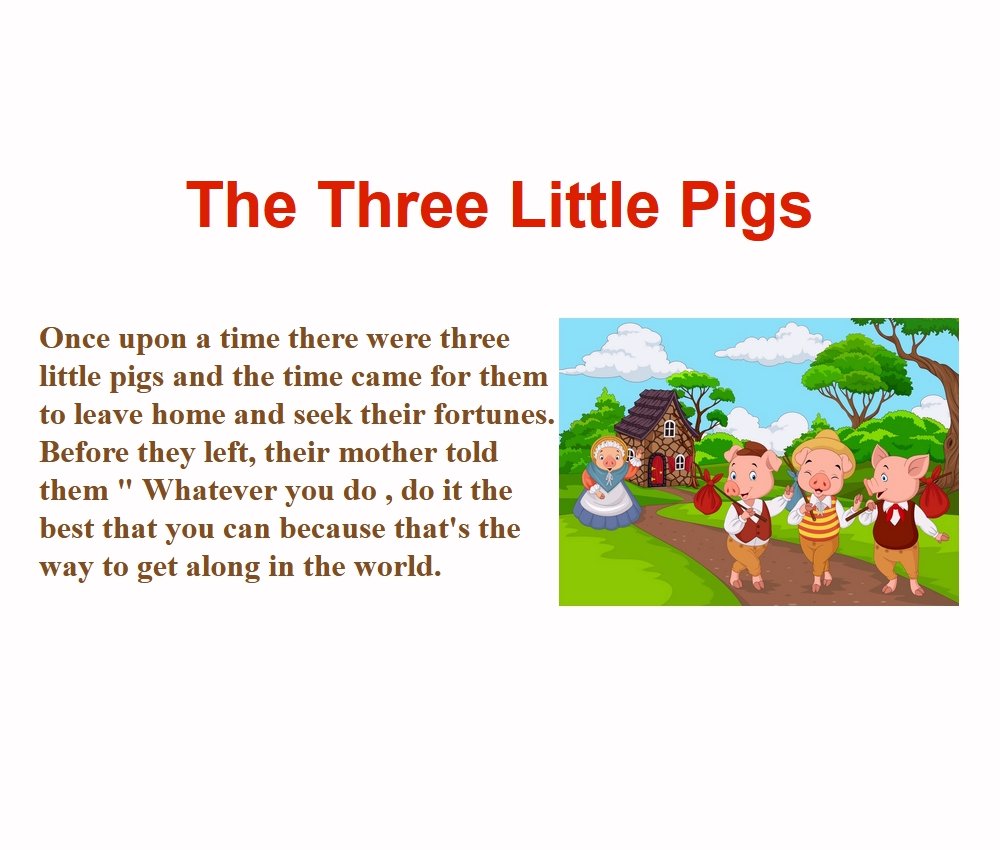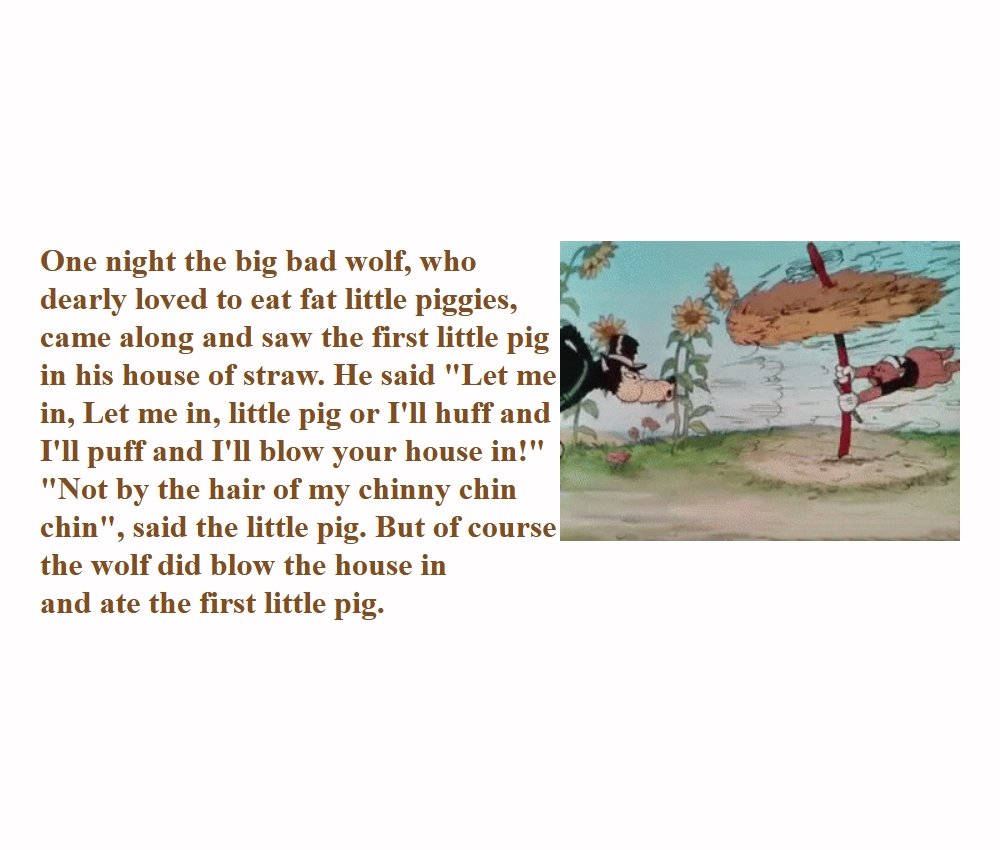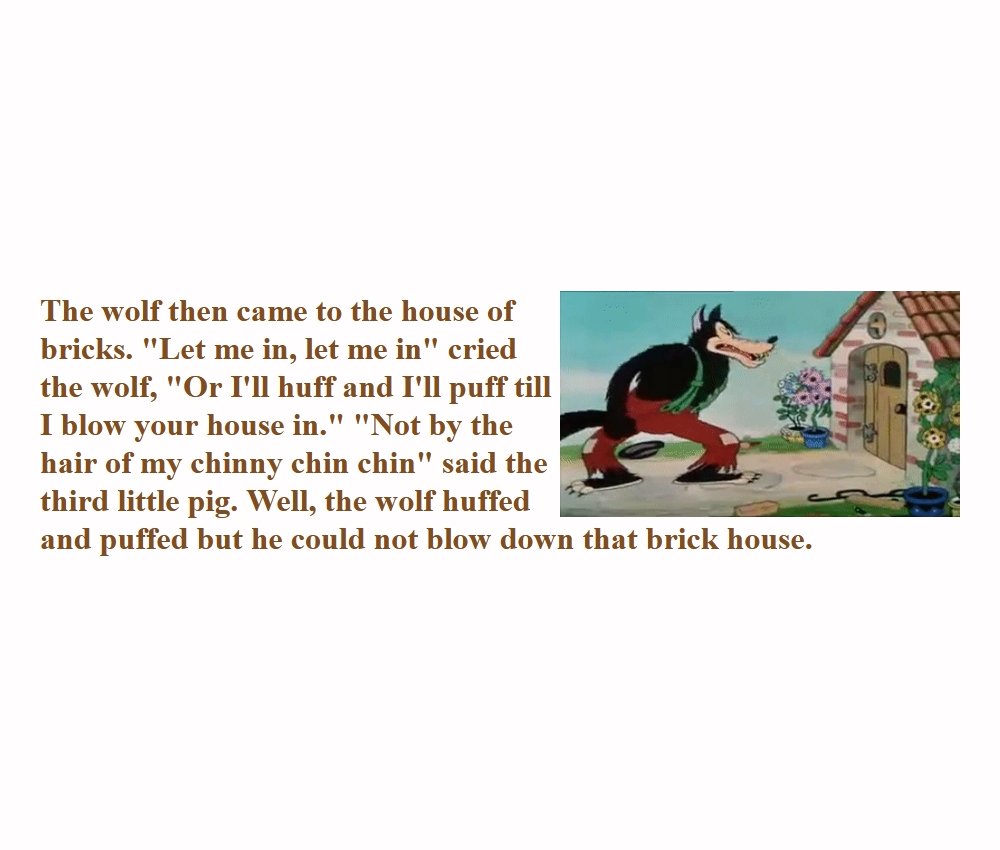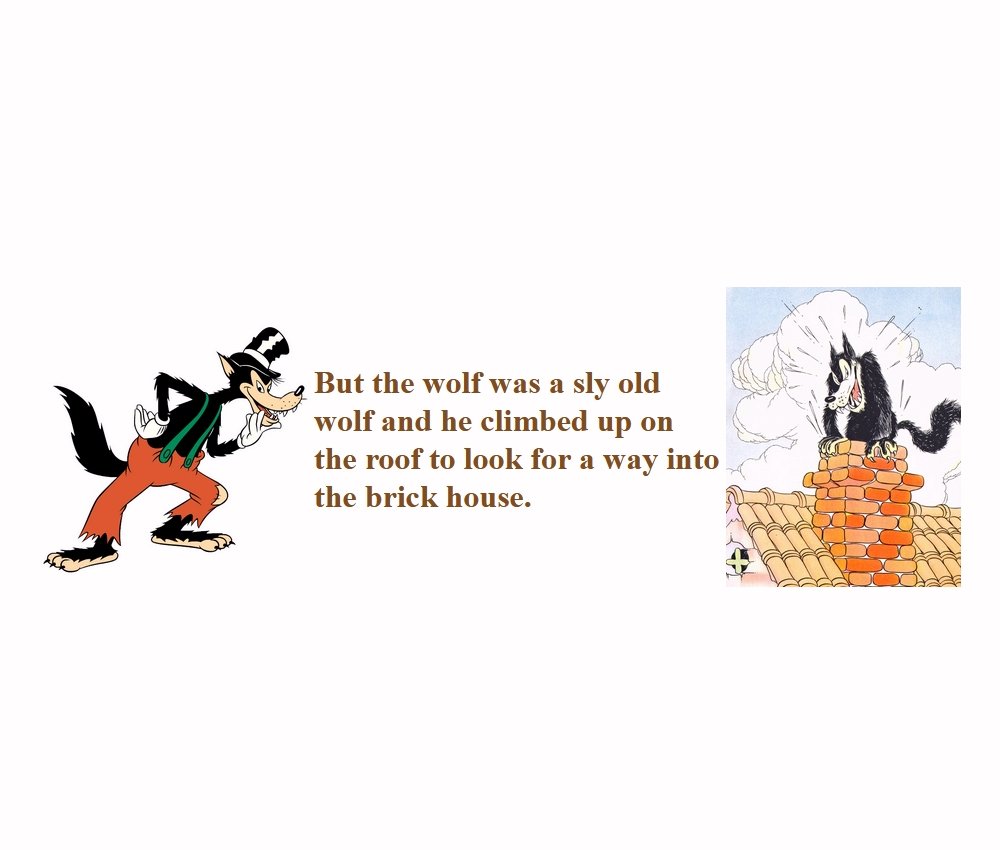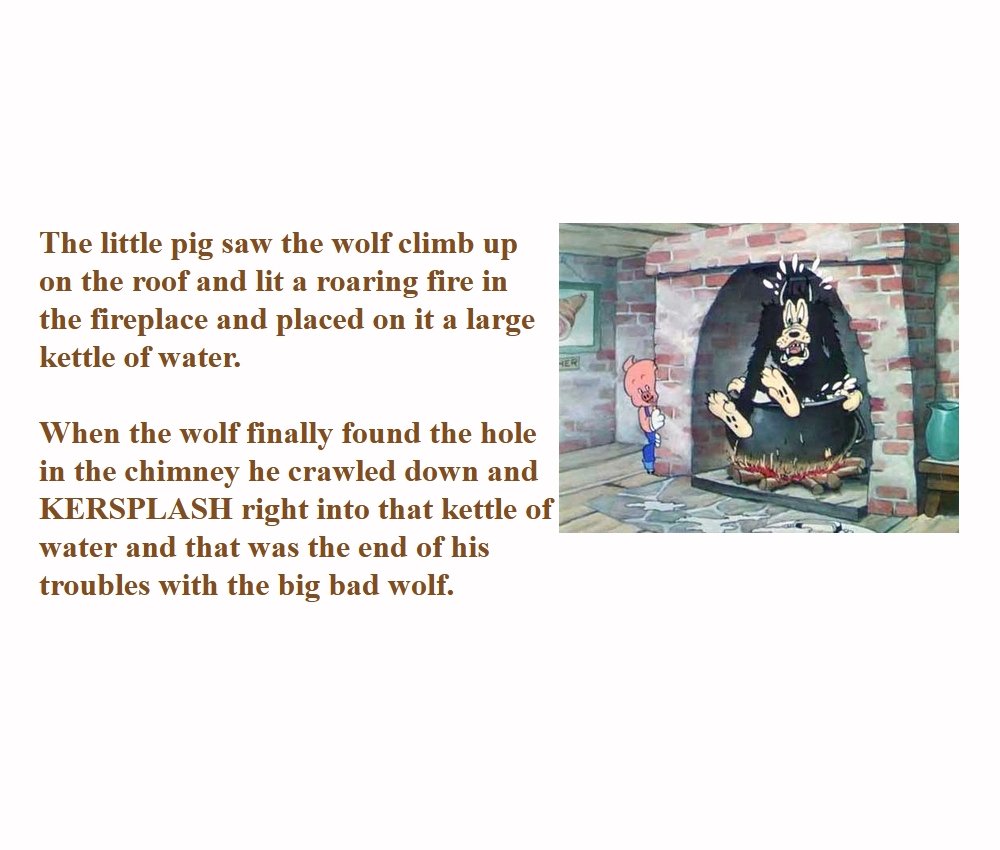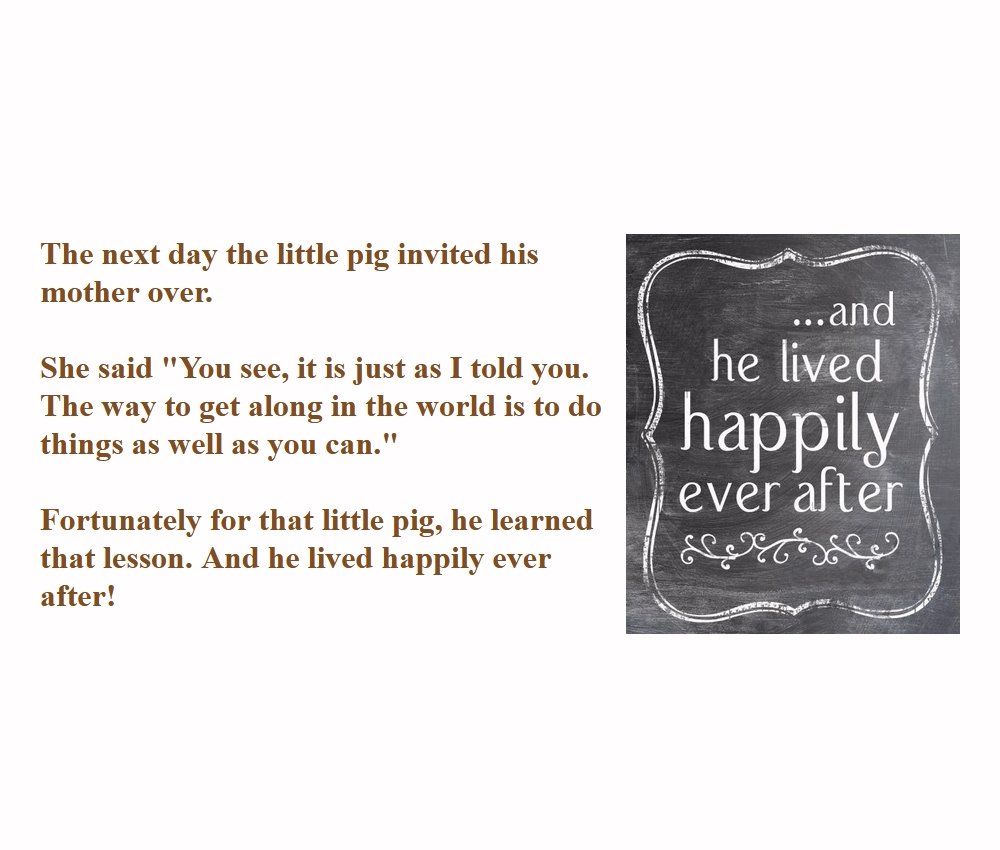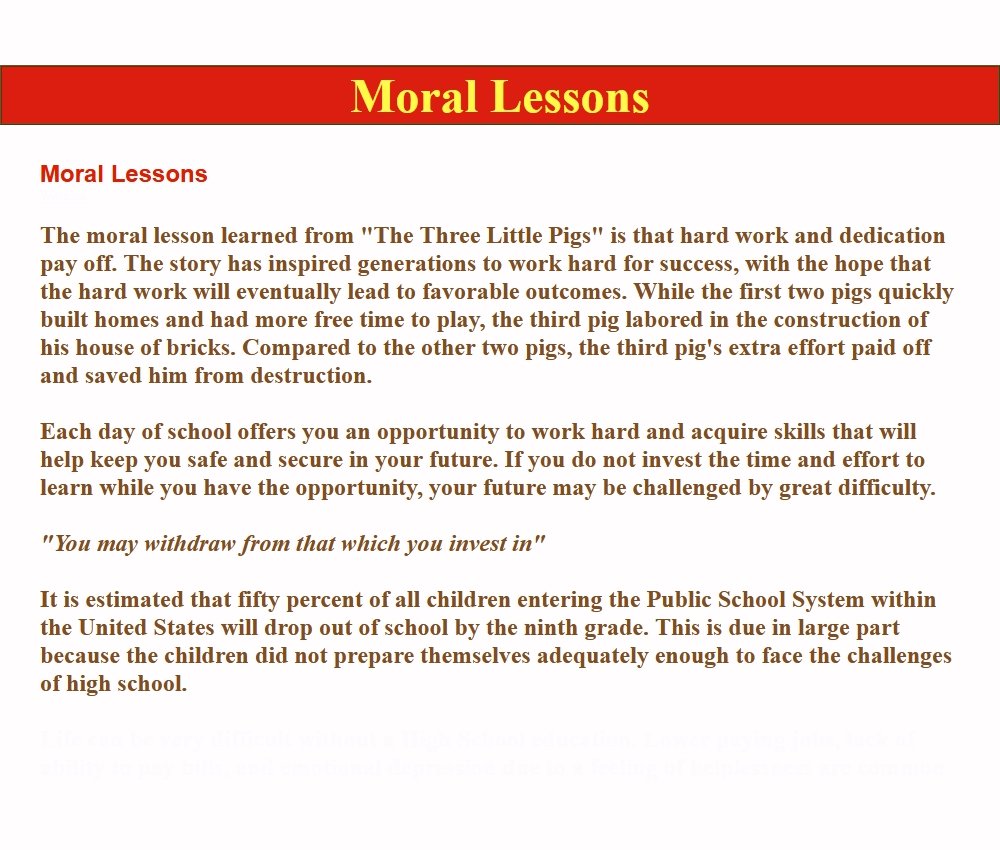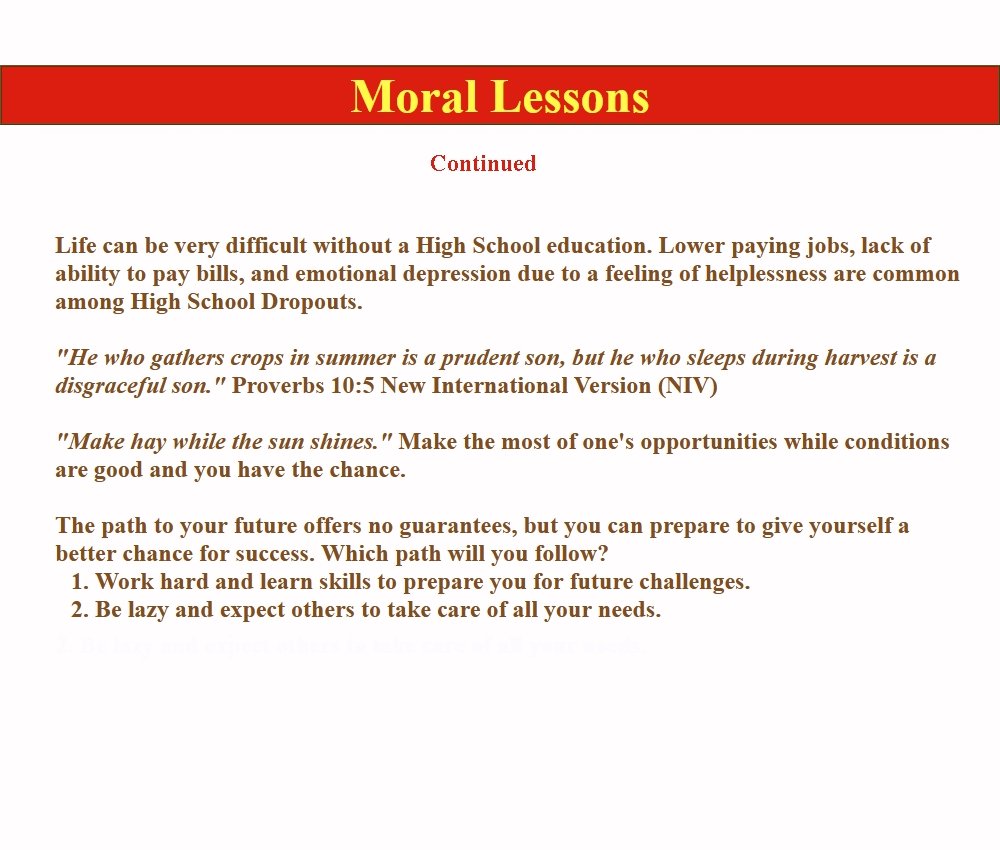Origin
The earliest credited "Three Little Pigs" story was written by James Orchard Halliwell in 1849.
The story appeared in a book titled, "Popular Rhymes and Nursery Tales."
It is not known whether Halliwell, who later used the name Halliwell-Phillipps, created the story or simply passed it down from previous generations.
Halliwell was credited by fellow English author Joseph Jacobs when he adapted the story for a book titled "English Fairy Tales."
Walt Disney and the Great Depression
In 1933, Walt Disney released an eight-minute animated film of the "Three Little Pigs."
According to the Encyclopedia of Disney Animated Shorts, the short film inspired many Americans through the Great Depression.
Americans used the Big Bad Wolf as a symbol of the strife in their lives.
Just as the three little pigs were able to overcome adversity through hard work, many Americans believed that their hard work would eventually lead them out of the Great Depression.
Child-friendly Adaptation
The modern-day version of "The Three Little Pigs" was adapted by Joseph Jacobs, who made changes to appeal to a younger audience.
According to Roli Books, in the original story, the "Big Bad Wolf" was boiled in a pot and eaten by the three pigs.
Rather than end the fairy tale in such a gruesome manner, Jacobs adapted the tale, so that the "Big Bad Wolf" came down the chimney and burned his tail.
In the Disney interpretation, the wolf lands in a pot of boiling turpentine, but runs away in pain through the chimney.
|
